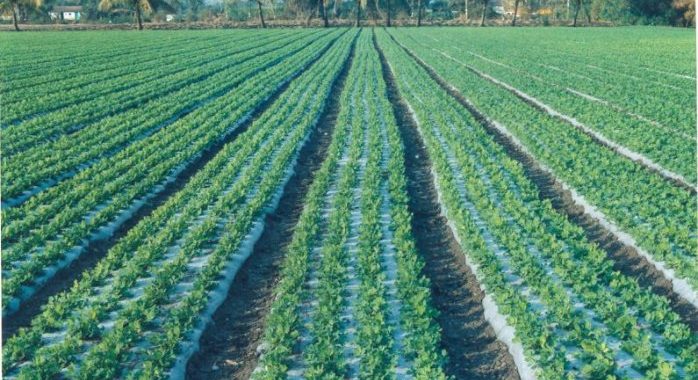by Dr. M. S. Basu
Why Polythene Mulch?
- Mulch has significant impact on the crop productivity in wide range of crops, primarily due to moisture conservation and weed management points of view.
- Polythene mulch is extensively used for groundnut cultivation in China with a productivity as high as 4 ton/ha as compared to non-mulch (2 ton/ha).
What are the reasons for such a high productivity?
- Initial rise in soil temperature facilitating faster germination
- Activating of beneficial soil microbes
- Conservation of moisture uniformly even under dry spells
- No/Negligible Crop-Weed competition
- Reduction in incidence of sucking pests at initial stage
- Increase in photosynthetic activity due to enhanced carbon flow in crop canopy
How relevant is the PMG Technology under Indian Situation?
The technology is highly relevant to the following groundnut growing situations during the post-rainy season:
Situation 1:
- Rabi-Rice fallow residual moisture situations in the states of Coastal Odisha, Andhra Pradesh, Tamil Nadu and West Bengal.
- Summer irrigated situation under command areas/water-shed/bore-wells in the states of Gujarat, Maharashtra and Karnataka.
Basically, to arrest soil moisture evaporation and thereby conservation of moisture; activation of soil microbes; elimination of crop-weed competition and substantial reduction in the incidence of sucking pests at initial crop growth stage.
Situation 2:
- Spring Groundnut areas in the Northern States, particularly in Punjab, Rajasthan and Uttar Pradesh after harvest of Potato and Rapeseed-Mustard /Toria.
Primarily, to overcome adverse effect of low temperature at the time of germination. The transparent ultra-thin film (5-7 micron) used as mulch increases soil temperature by 4-5 degree centigrade by converting solar energy into heat energy at the rhizosphere.
Application of Polythene Mulch in both Summer and Spring irrigated situations cut down water requirement by 40% and therefore, more areas can be brought under irrigated groundnut in these States.
Situation 3:
- In those situation where basic inputs are not limiting and farmers are progressive.
Mainly to achieve high yields by integrating mulch film, drip irrigation and planting on raised bed that enhance photosynthetic efficiency and improve partitioning from ‘Source’ to ‘Sink’.
What is needed to promote PMG Technology further?
- Easy access to transparent polythene film (5-7 micron) at a reasonable price (VAT, Sales Tax may be removed); should be available at Taluka places from where farmers purchase seed, fertilizers, pesticides, etc.
- Manual on PMG practices for farmers in regional languages
- More Front Line Demonstrations in new/ potential areas
- Training on uses and abuses of mulch film
- Encourage recycling / reuses of the film
Immediate Scope to Promote PMG; Season/Situation and the States:
- Spring groundnut areas in Punjab: 10,000 ha
- Summer groundnut in Rajasthan: 20,000 ha
- Summer groundnut in Gujarat, Maharashtra: 50,000 ha
- Rabi residual moisture situations: 100,000 ha
(Odisha, Karnataka, Tamil Nadu, West Bengal)
Total 180,000 ha
Expected additional production due to use of PMG:
An additional production of 5.4 lakh tons groundnut (nuts in shell) at an estimated average productivity of 3.0 ton/ ha could be mopped up with appropriate policy support. Part of additional production, usually of high quality, may be linked to Mid-Day Meal Scheme benefiting millions of school children from the nutritional security point of view. The PMG Technology, in principle, may be adopted for:
- Increasing seed production of newly released improved groundnut varieties which have not reached to farmers.
- Targeting export of confectionery varieties (low oil, high oleic, etc.), free from Aflatoxin, to premium European markets.

